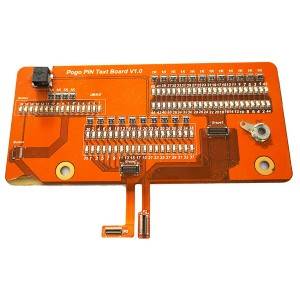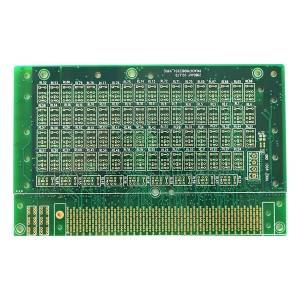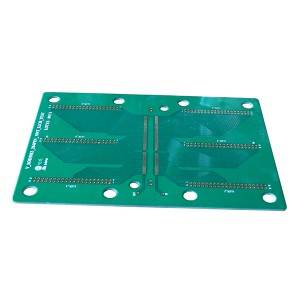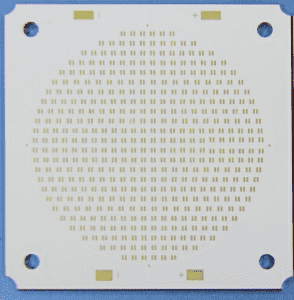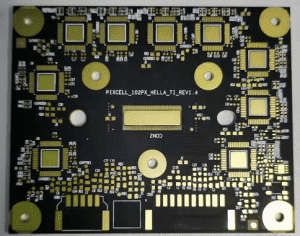Competitive PCB Manufacturer
6 layer impedance control rigid-flex board with stiffener
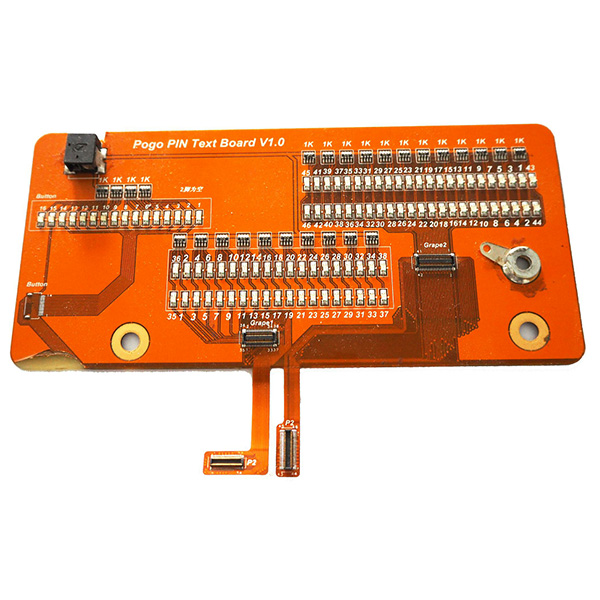
Material type: FR-4, polyimide
Min trace width/space: 4 mil
Min hole size: 0.15mm
Finished board thickness: 1.6mm
FPC thickness: 0.25mm
Finished copper thickness: 35um
Finish: ENIG
Solder mask color: red
Lead time: 20 days
The birth and development of FPC and PCB gave birth to the new product of rigid -flex board. Therefore, in PCB prototyping , flexible circuit board and rigid board are combined together according to relevant technological requirements after pressing and other procedures to form a circuit board with FPC characteristics and PCB characteristics.
In PCB prototyping, the combination of rigid board and FPC provides the best solution in limited space conditions. This technology provides the possibility to securely connect device components while ensuring polarity and contact stability, and reduces the number of plug and connector components.
Other advantages of the rigid_flex board are dynamic and mechanical stability, resulting in 3d design freedom, simplified installation, space savings, and maintenance of uniform electrical characteristics.
Rigid-Flex PCBs Fabrication Applications:
Rigid-Flex PCBs offer a wide array of applications, ranging from smart devices to cell phones and digital cameras. Increasingly, rigid-flex board fabrication has been used in medical devices such as pacemakers for their space and weight reduction capabilities. The same advantages for rigid-flex PCB usage can be applied to smart control systems.
In consumer products, rigid-flex doesn't just maximize space and weight but greatly improves reliability, eliminating many needs for solder joints and delicate, fragile wiring that are prone to connection issues. These are just some examples, but Rigid-Flex PCBs can be used to benefit nearly all advanced electrical applications including testing equipment, tools and automobiles.
Rigid-Flex PCBs Technology and Production Process:
Whether producing a rigid flex prototype or production quantities requiring large scale Rigid-Flex PCBs fabrication and PCB assembly, the technology is well proven and reliable. The flex PCB portion is particularly good in overcoming space and weight issues with spatial degrees of freedom.
Careful consideration of Rigid-Flex solutions and a proper assessment of the available options at the early stages in the rigid-flex PCB design phase will return significant benefits. The Rigid-Flex PCBs fabricator must be involved early in the design process to ensure the design and fab portions are both in coordination and to account for final product variations.
The Rigid-Flex manufacturing phase is also more complex and time-consuming than rigid board fabrication. All the flexible components of the Rigid-Flex assembly have completely different handling, etching, and soldering processes than rigid FR4 boards.
Benefits of Rigid-Flex PCBs
• Space requirements can be minimized by applying 3D
• By removing the need for connectors and cables between the individual rigid parts, the board size and overall system weight can be reduced.
• By maximizing space, there is often a lower count in parts.
• Fewer solder joints assure higher connection reliability.
• Handling during assembly is easier in comparison with flexible boards.
• Simplified PCB assembly processes.
• Integrated ZIF contacts provide simple modular interfaces to the system environment.
• Test conditions are simplified. A complete test before installation becomes possible.
• Logistical and assembly costs are significantly reduced with Rigid-Flex boards.
• It is possible to increase the complexity of mechanical designs, which also improves the degree of freedom for optimized housing solutions.
Can we use FPC to replace rigid board?
Flexible circuit boards are useful, but they are not going to replace rigid circuit boards for all applications. Cost is important factor,. Rigid circuit boards are less expensive to manufacture and install in a typical automated high-volume fabricating facility.
Typically, the ideal solution for an innovative product is one that incorporates flexible circuitry when necessary and employs solid, reliable rigid circuit boards where possible to keep manufacturing and assembly costs reduced.
PRODUCT CATEGORIES
Focus on providing mong pu solutions for 5 years.


